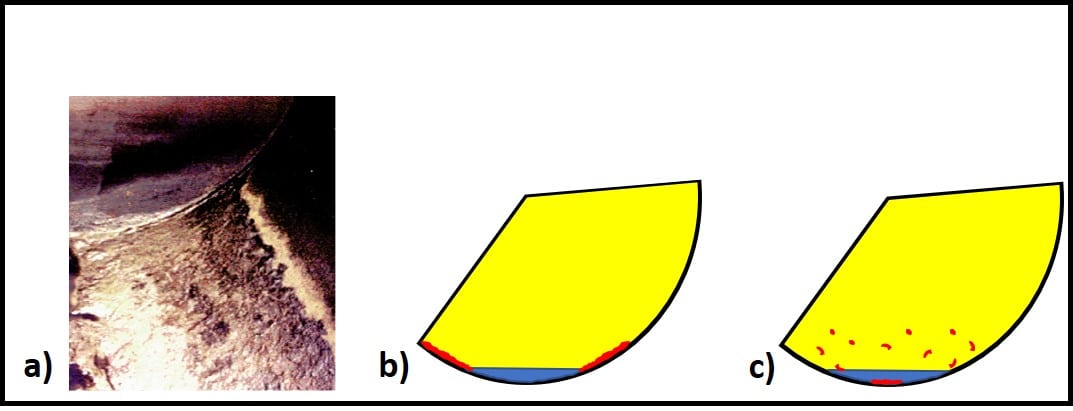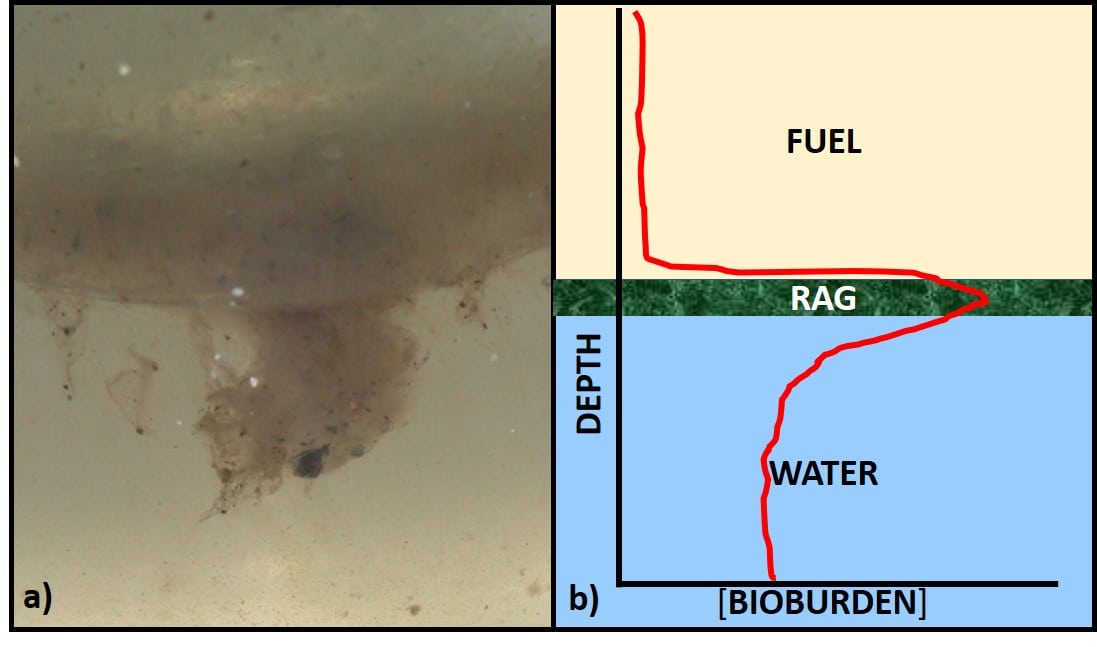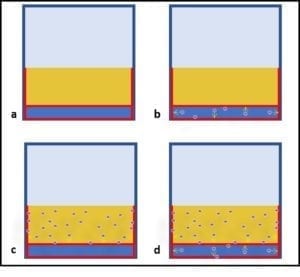The Petroleum Equipment Institute (PEI) held its 2018 convention at the Las Vegas Convention Center from 07 to 10 October 2018. As usual, the PEI convention was held in conjunction with the much larger National Association of Convenience Store (NACS) convention. Today, I’ll focus on a few items that are particularly relevant to fuel and fuel system microbiology. I’m not going to attempt to provide anything approaching an overview of the entire convention. Instead I’ll report and discuss a…
READ MORE


 Fig 1. Microbes in fuel systems and the biocides used to control them – a) fuel (yellow-orange) over bottoms-water (dark blue), with red lines showing where microbes tend to accumulate; b) after treatment with water-soluble biocide (purple stars); c) after treatment with fuel-soluble biocide; d) after treatment with universally-soluble biocide. Where are the bugs? If you intend to use a biocide to disinfect a fuel…
Fig 1. Microbes in fuel systems and the biocides used to control them – a) fuel (yellow-orange) over bottoms-water (dark blue), with red lines showing where microbes tend to accumulate; b) after treatment with water-soluble biocide (purple stars); c) after treatment with fuel-soluble biocide; d) after treatment with universally-soluble biocide. Where are the bugs? If you intend to use a biocide to disinfect a fuel… 
